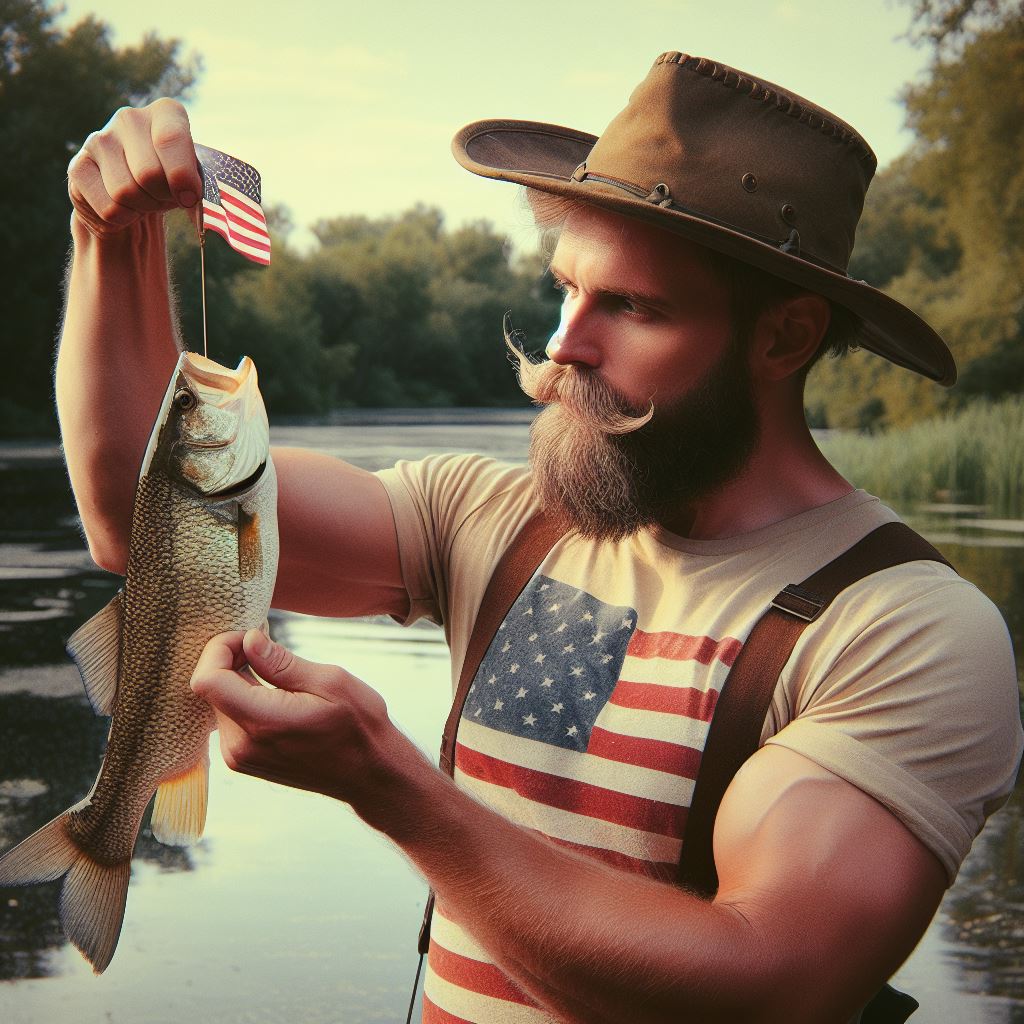Introduction
Fishing has always played a crucial role in the culture and economy of the USA.
Embark on a riveting journey through time as we delve into the rich tapestry of fishing history in the USA.
Discover how this timeless pursuit has evolved, from ancient Native American techniques to the bustling industry it is today.
Explore the dynamic intersections of culture, commerce, and conservation, tracing the footsteps of early settlers casting lines in pursuit of sustenance.
Uncover the pivotal role fishing played in shaping coastal communities, pioneering the maritime spirit that defines America.
Join us as we cast a line into the past, exploring the changing tides of fishing practices, regulations, and innovations that have sculpted the nation’s relationship with its waters.
From the tranquil artistry of recreational angling to the industrial revolution that transformed fishing into a powerhouse industry, this odyssey through history will cast new light on the vital role that fishing has played in shaping the USA.
So, tighten your reel, ready your bait, and let’s embark on a captivating expedition through the waters of the USA’s fishing legacy.
Its importance and popularity cannot be underestimated.
Embark on the captivating historical odyssey of fishing in the USA. Unearth its profound impact on culture and economy with me.
Ancient Times
- Native American fishing practices and techniques were deeply ingrained in their culture.
- Fishing served as a crucial means of survival and sustenance for Native American tribes.
- The importance of fishing in Native American tribes extended beyond mere sustenance—it had cultural and spiritual significance.
- Embark on the captivating historical odyssey of fishing in the USA. Unearth its profound impact on culture and economy with me.
- Fishing techniques varied based on the geography and resources available to different tribes.
- Many Native American tribes had fishing rituals and ceremonies that accompanied their fishing expeditions.
- Fish served as a staple food source for Native American communities, providing essential nutrients.
- The abundance of fish in rivers, lakes, and coastal areas allowed Native Americans to establish settled communities.
- Native American communities developed intricate systems for managing fishing resources sustainably.
- Fishing was a communal activity, fostering a sense of unity and cooperation among Native American tribes.
Native American Fishing Techniques
- Netting: Native Americans used nets made from woven plant fibers to catch fish in rivers and lakes.
- Spearing: A common fishing method involved spearing fish using sharpened sticks or bone-tipped weapons.
- Traps: Native Americans adeptly constructed fish traps, utilizing weirs and cages. These traps facilitated easy fish capture, enhancing their sustenance.
- Canoes: Native Americans used canoes for fishing, allowing them to access deeper waters and larger fish.
- Fishing with dogs: Some tribes trained dogs to assist them in fishing by chasing fish into nets or shallow waters.
- Fishing with fire: Native Americans practiced fire fishing, which involved attracting fish to torches or fires at night.
Importance of Fishing in Native American Culture
- Fishing was deeply intertwined with Native American traditions, folklore, and spiritual beliefs.
- Many Native American tribes associated specific fish species with symbolic meanings and spiritual powers.
- Fishing ceremonies were often conducted to honor the spirits of the water and to seek their blessings.
- The passing down of fishing knowledge and techniques from elders to younger generations was highly valued.
- Fish played a significant role in Native American artwork, jewelry, and storytelling.
- The sharing of freshly caught fish among tribe members fostered a sense of community and reciprocity.
- Fishing provided a source of pride and identity for Native American tribes, showcasing their connection to the land and water.
In a nutshell, Native American fishing practices were vital for their survival, sustenance, and cultural traditions.
The intricate knowledge of various fishing techniques, sustainable resource management, and the spiritual importance of fish exemplify the deep-rooted relationship between Native Americans and fishing.
This historical perspective sheds light on the rich heritage of fishing in the USA, fueling a continued appreciation for the role fishing plays in our society today.
Colonial Era
- European colonists introduced new fishing methods and equipment to the USA.
- Coastal settlements saw the development of a commercial fishing industry.
- Fishing played a crucial role in supporting the early economy and trade.
European settlers revolutionized American fishing, introducing advanced techniques, spawning a coastal industry. Recognizing abundant resources, colonies built fleets, supporting local economies.
Fish, a valuable commodity, fueled trade networks between colonies, Europe, and the Caribbean.
Specialized fishing communities emerged, shaping a distinct way of life. Generations mastered the trade, passing down expertise.
Native American techniques influenced settlers, diversifying methods.
European advancements, like nets and hooks, replaced traditional ways, boosting efficiency and industry growth.
This era solidified fishing’s role in economy, trade, and culture, laying the foundation for a lasting heritage.
Read: Career Progression: Opportunities for Foresters in the USA
Transform Your Career Today
Unlock a personalized career strategy that drives real results. Get tailored advice and a roadmap designed just for you.
Start Now19th Century
In the 19th century, as industrialization took hold, fishing in the USA experienced substantial transformations.
These changes were profound..
Impact of industrialization on fishing practices
- Industrialization brought machinery and technological advancements that revolutionized the fishing industry.
- New tools, like steam-powered winches and trawling nets, enhanced efficiency.
- With the availability of industrial equipment, fishing practices became more commercialized.
Advancements in fishing technology and boat design
- Entering a pivotal era, fishing tech and vessel design progressed.
- Innovations like the use of steam power and motorized boats made fishing more efficient.
- New boat designs, including the introduction of steel-hulled ships, improved durability and capacity.
Emergence of commercial fishing as a major industry
- The combination of industrialization and technological advancements led to the emergence of commercial fishing.
- Transitioning to profit-driven motives, large-scale operations shifted from sustenance-based fishing to prioritize catching fish for economic gain.
- Increased demand for fish in growing cities spurred the growth of the commercial fishing industry.
Development of regional fishing centers and fish markets
- As commercial fishing grew, regional fishing centers and fish markets began to flourish.
- Coastal towns like Boston and Gloucester thrived as central fish processing and trading hubs.
- These centers provided employment opportunities and contributed to local economies.
In review, the 19th century was a transformative period for fishing in the USA.
Industrialization brought technological advancements that revolutionized fishing practices.
Commercial fishing emerged as a major industry, driven by increased demand and improved efficiency.
The establishment of regional fishing centers and fish markets bolstered fishing’s economic significance.
Read: The Role of Foresters in U.S. Wildlife Habitat Preservation

20th Century
The 20th century brought about a number of significant changes and challenges for the fishing industry in the United States.
Environmental concerns and overfishing became major issues that needed to be addressed.
Environmental Challenges and Overfishing Concerns
- This resulted in widespread overfishing, causing a decline in fish populations and disrupting marine ecosystems.
- In response, scientists and conservationists began raising awareness about the need for sustainable fishing practices.
- Efforts were made to understand the impacts of fishing on the environment and devise ways to mitigate them.
Establishment of Fisheries Management and Conservation Measures
- In the early 20th century, various organizations and government agencies started working towards fisheries management.
- The agency aimed to conserve and manage fish populations, ensuring their sustainability for future generations.
- It conducted research to gather scientific data about fish stocks and develop strategies for their conservation.
- By the mid-20th century, the concept of fisheries management became more widely recognized and implemented.
- In 1976, the Magnuson-Stevens Fishery Conservation and Management Act was passed, paving the way for comprehensive fisheries management.
- Under this law, regional fishery management councils were established to develop and implement fishery management plans.
Government Regulations on Commercial Fishing
- The 20th century witnessed the implementation of various regulations to control commercial fishing activities.
- These regulations aimed to prevent overfishing, protect vulnerable species, and preserve fish habitats.
- Laws were enacted to establish fishing seasons, size limits, and catch quotas for commercial fishermen.
- Efforts were made to minimize bycatch and reduce the impact of fishing gear on non-target species.
- Government agencies introduced licensing systems.
Rise of Recreational Fishing and Its Impact on the Industry
- In the 20th century, Americans embraced recreational fishing.
- Improved leisure time and access to fishing areas contributed to the growth of recreational fishing as a hobby.
- The surge in recreational fishing brought about favorable and adverse effects on the fishing industry.
- Recreational fishing surged, yielding economic benefits.
- Efforts were made to regulate recreational fishing through licensing, bag limits, and size restrictions.
- Conservation organizations and anglers began promoting catch-and-release practices to ensure sustainability.
The 20th century witnessed profound environmental challenges.
Overfishing concerns led to the establishment of fisheries management and conservation measures.
Government regulations were enforced to manage commercial fishing.
Balancing economic interests with sustainable fishing practices became a key focus for the industry.
Read: Public Perception vs. Reality: Debunking Forestry Myths
Modern Era
In the modern era, fishing in the USA has seen significant advancements in technology, the growth of sport fishing tourism, conservation efforts, and the current state of the fishing industry.
Technological Advancements in Fishing Gear and Equipment
- Innovation in fishing gear and equipment has revolutionized the industry, making fishing more efficient and productive.
- Advanced fishing rods, reels, and lines have greatly improved casting and reeling techniques.
- The use of sonar and GPS technology allows fishermen to locate fish more accurately.
- Modern fishing boats employ advanced navigation systems and active fish finders for enhanced functionality.
- Drones actively spot fish schools, offering anglers valuable information from above.
Growth of Sport Fishing Tourism and Its Economic Significance
- Sport fishing tourism has boomed recently. Drawing anglers globally, it offers exciting opportunities.
- Popular fishing destinations in the USA include Florida, Alaska, and the Great Lakes region.
- Fishing tournaments and competitions have become major events, drawing participants and spectators from all over the world.
- Sport fishing tourism generates billions annually, underscoring its vital economic importance in revenue generation.
- Local businesses thrive with an influx of anglers.
Conservation Efforts to Protect Fish Populations and Habitats
- Efforts prioritize sustainable fishing.
- Implemented laws set catch limits and establish conservation zones.
- Initiatives restock depleted fish stocks in specific areas.
- Habitat restoration projects aim to improve the quality of aquatic environments, ensuring the survival of fish species.
- Organizations and individuals actively promote catch and release practices to minimize the impact on fish populations.
Current State of the Fishing Industry in the USA
- The fishing industry in the USA remains a vital sector, providing employment and food for millions of people.
- Commercial fishing continues to be a significant source of income for coastal communities.
- The aquaculture industry has grown rapidly, meeting the demand for seafood and reducing pressure on wild fish populations.
- Innovative practices and technologies adopt, ensuring responsible environmental stewardship. It transitions, adapting for the future.
- Undertaking research and initiatives develops responsible fishing practices, adapting to changing environmental conditions.
In the USA, fishing thrives with tech advancements, tourism growth, and conservation.
Amid challenges, innovation safeguards resources.
Transitioning forward, we tackle hurdles with creative solutions, safeguarding our environment.
Read: U.S. Foresters: Champions of Sustainable Timber Harvesting
Showcase Your Business Today
Reach thousands of readers actively exploring professional services. Publish your business profile and grow your audience now.
Publish NowDiscover More: The Impact of Climate Change on Forestry in the U.S.
See Related Content: Top Agricultural Engineering Universities in the USA
Conclusion
Fishing in the USA has gone through a remarkable journey over the years.
From early Native American techniques to the rise of commercial fishing in the 19th century, the industry has played a significant role in shaping the nation’s cultural and economic landscape.
The evolution of fishing, marked by transition words, has sustained livelihoods and fostered economic growth in coastal communities.
It has fostered a deep sense of connection to nature and traditions among fishing communities, becoming an integral part of their identity.
With advancements in technology and sustainability practices, there is a potential to ensure the long-term viability of fish stocks and protect the marine ecosystem.
Embrace sustainable fishing, enact regulations, invest in research and education to secure the future of fishing in the USA for generations.
In closing, fishing in the USA has a rich history that has shaped the nation’s culture and economy.
Its enduring significance remains paramount; one must not underestimate its continued importance.
By acknowledging the past, let’s embrace sustainability.
Through collective action, the fishing industry and the nation will thrive for a prosperous future.
[E-Books for Sale]
The Big Book of 500 High-Paying Jobs in America: Unlock Your Earning Potential
$19.99 • 500 High-Paying Jobs • 330 pages
Explore 500 high-paying jobs in America and learn how to boost your career, earn more, and achieve success!
See All 500 High-Paying Jobs of this E-Book
1001 Professions Without a Degree: High-Paying American Jobs You Can Start Now
$19.99 • 1001 Professions Without a Degree • 174 pages
Discover 1001 high-paying jobs without a degree! Unlock career tips, skills, and success strategies for just $19.99!




